

By Wang Xinyuan
On August 12, 2019, the Wangfujing flagship store of the Peace & Dessert Chinese Pastry Shop first opened. It is on the B2 floor of the Wangfujing Department Store, with a building area of 2,400 square meters. This project is the first scene-immersive experience space in Beijing, which presents the traditional Beijing culture with high-tech means in its scene design. At the same time, consumers can also experience the old taste of traditional Beijing cuisine here. With the high-quality integration of business, culture and tourism, Peace & Dessert Chinese Pastry Shop has become a well-known landmark with Beijing’s local characteristics and modern fashion. Now, it is leading the new wave of the city’s tourism as the first commercial and cultural model in Beijing.
Recently, Peace & Dessert Chinese Pastry Shop has cooperated deeply with the brand of “Opera Academy” in building a holographic theater to enhance the interactive experience of tourists. At the same time, the Palace Museum, Amazing Words Bookstore, Baimao Pancake, Fangzhuanchang Zhajiangmian (soybean paste noodles), Dabei Photo and many other popular brands and time-honored brands have had their stores moved in and further upgraded their consumption scenes, thus developing the Shop into a cultural experience center combining consumption, culture, technology and entertainment.
“Beijing combines the resources of the government with the creativity of enterprises to promote the inheritance and development of culture. This is a valuable practice that many cities around the world should learn from.” commented Yury Tavrovskiy, a famous Russian sinologist and political commentator, while he participated in the “Silk Road Rediscovery Tour of Beijing”.
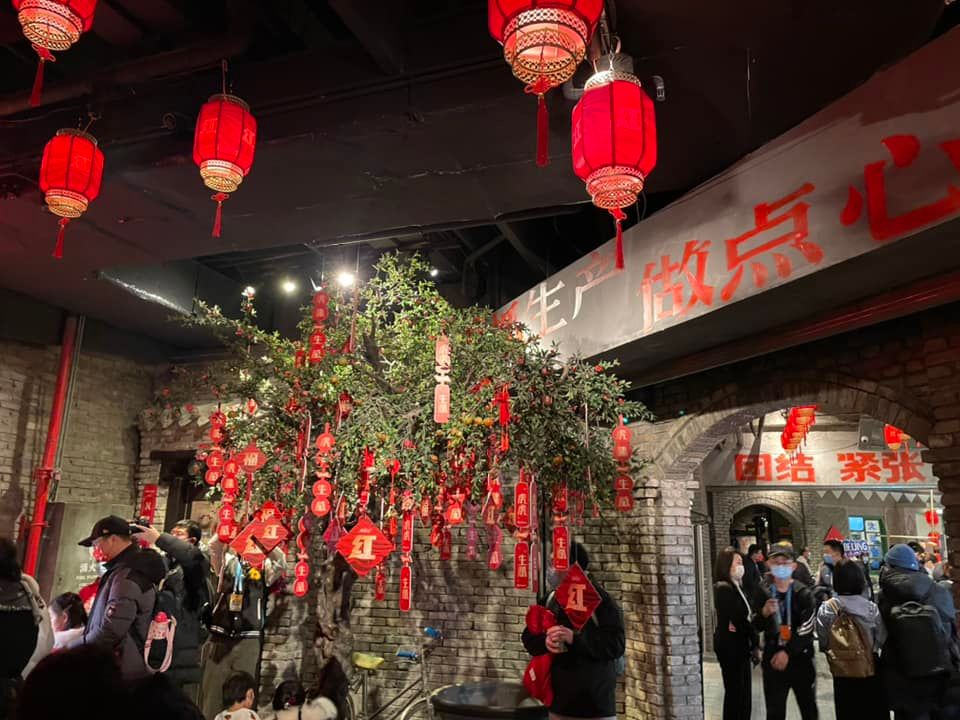
Photo taken on Feb. 6, 2022 shows the inner street view of the Peace & Dessert Chinese Pastry Shop at Wangfujing in Chaoyang District, Beijing, China's capital city. (Wang Xinyuan/Guangming Picture)
Street life in traditional Beijing: growing flowers, walking with birds, playing chess and bringing up children in the hutongs
Going down from Wangfujing Department Store to the second basement is like entering a time tunnel. Mei Chang Hutong is a symbol of the 1980s: communication in hutong is not convenient and there is a mail box at the door of every house. There is a row of bird cages on the wall, and birds are chattering inside. At that time, grandmother loved to grow flowers, and flower pots and cabbages were placed under the windowsill neatly, next to the family’s only bicycle. Further on, there are some clothes hanging on the clothesline, white sneakers drying at the root of the wall, chess and camp chairs at the corner, and some notices and promotional slogans from the neighborhood committee posted on the wall. These scenes restore street life in traditional Beijing.
“In addition to some scenic spots and historical sites, Beijing has its own charm of hutongs. Walking through the hutongs, visitors can get the charm of the ancient capital.” Tengneung Kritsanagun, a Thai variety show host and advertising star, was impressed by the hutongs when he participated in the “Silk Road Rediscovery Tour of Beijing”, and this is the most moving part of the design of the Peace & Dessert Chinese Pastry Shop. Hutongs and quadrangle courtyards are the most representative of Beijing. The flowers and birds are not only decorations, but also give visitors a sense of real life in hutongs. In Mei Chang Hutong, each house has only one window, but through each window, visitors can get the story of the family. If visitors listen carefully, they can get the sounds of hawking, children’s crying, playfulness, neighbors’ chatter, cooking, and other mixed sounds. Hutongs are a microcosm of life, and when visitors wander through them, it is as if they can feel the emotions of life in hutongs, such as happiness and sadness.
Beijing culture: traditional bookstores, video halls, and learning history in theatre

Photo taken on Feb. 6, 2022 shows the traditional green train displayed at the Wangfujing flagship store of the Peace & Dessert Chinese Pastry Shop in Chaoyang District, Beijing, China's capital city. (Wang Xinyuan/Guangming Picture)
At the train station, tourists can hear the announcement “The train has arrived, please get on at the front door and get off at the back door”. Stepping onto the Dongfeng 1957 train, the dim carriage, blue seats and small tables make visitors feel like they are back in the 20th century. Leaving the green train, bookstores, photo studios, bazaars, video halls, Peace Theater, and Quanye Chang will come into view.
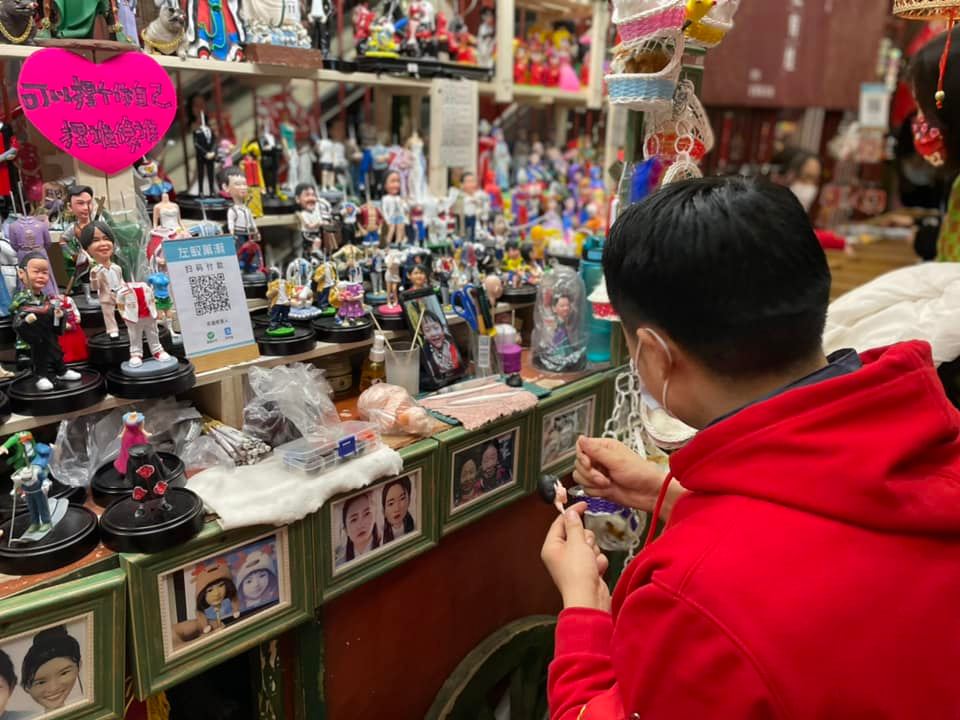
Photo taken on Feb. 6, 2022 shows a craftman making dough figure at the Wangfujing flagship store of the Peace & Dessert Chinese Pastry Shop in Chaoyang District, Beijing, China's capital city. (Wang Xinyuan/Guangming Picture)
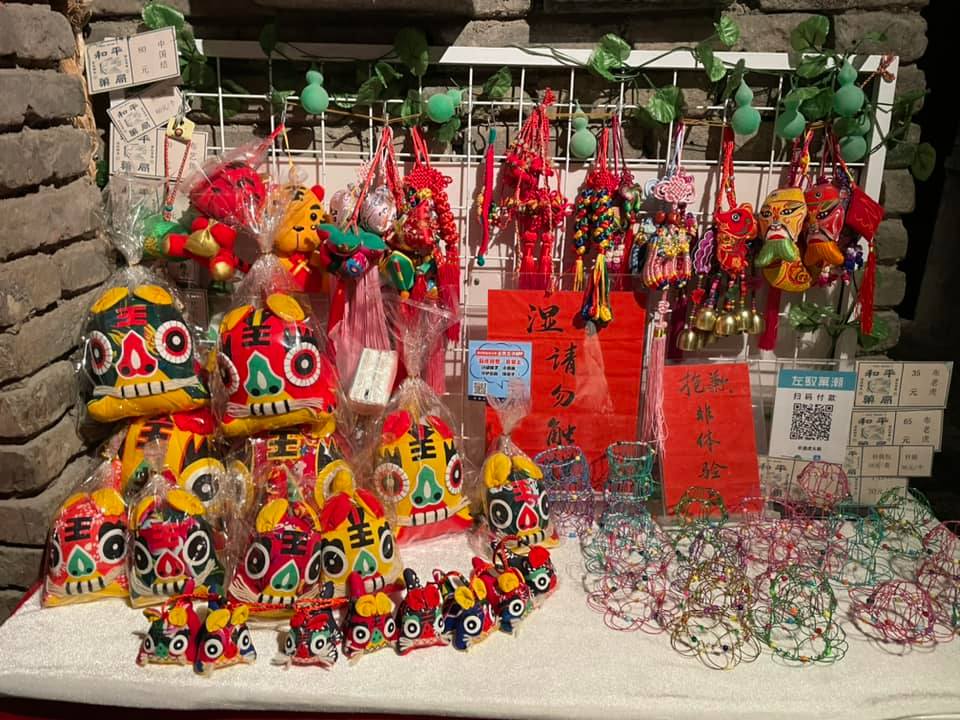
Photo taken on Feb. 6, 2022 shows the traditional handicrafts displayed at the Wangfujing flagship store of the Peace & Dessert Chinese Pastry Shop in Chaoyang District, Beijing, China's capital city. (Wang Xinyuan/Guangming Picture)
In the quaint bookstore, visitors can order a cup of jasmine tea and sit for a while. At the photo studio, they can visit the film processing room and listen to the music played on the old record player. At Xiaojue Temple, visitors can appreciate the scenery of Beijing in four seasons. “Quanye Chang is the first commercial complex in the modern era in Beijing. Here, the transparent counters are filled with snacks in children’s period such as “Wuhuaguo (figs)”, “popping candy”, and “plum candy”. There are also butcher stores, Xiaobawang game machines, video halls, shoe repair stalls, and even the popular “fortune teller” stalls at the time. At the Peace Theatre, visitors can learn about the history of Beijing. They can also buy Tanghulu (a snack made from hawthorn) and Chuitangren. According to the staff of the Peace & Dessert Chinese Pastry Shop, the craftsmen here are basically inheritors of intangible cultural heritage.
Snack in Beijing: drinking Douzhir, tasting pickles with Jiaoquan, and buying pastries at the Peace & Dessert Chinese Pastry Shop
If tired, travelers can go to Peace Snack Street to taste snacks. Along with the yelling of vendors such as “Luzhu (boiled pork giblets with baked wheaten paste), Chaogan (stewed liver) and Baodu (cooked tripe of sheep or swine), Douzhir, Jiaoquan and Zhajiangmian (soybean paste noodles)”, various special snacks, wooden tables, chairs, plates and bowls build up a sense of ritual. Especially ice cream and a variety of pastries can make the slogan “Foodies of the world come together” a reality. The pastries here are also the origin of the name “Peace & Dessert Chinese Pastry Shop”. In the Tang and Song dynasties, pastry was called “Guozi”. Later, this name was passed on to Japan and continued to be used. In traditional Beijing, the name “Guoju” was also used. There are fresh and dried fruits and pastries, which make tourists happy to listen to their names. In those days when supplies were scarce, pastries were a precious delicacy. The Nucleolus Crisp, Niu She Bing (a cake in the shape of an ox tongue), Water Lily Crisp and Jing Ba Jian (eight kinds of pastries in Beijing) at the Peace & Dessert Chinese Pastry Shop have been improved on the basis of the traditional taste. The Nucleolus Crisp, for example, has both classic flavors and cranberry flavors that cater to modern people. Here, the pastries that are popular with tourists can be bought and taken away by themselves, or mailed at the “Peace Post Office”. The pear soup and sour plum soup are both delicious. What’s more, the features of traditional Beijing are revealed in the innovative “almond tofu and erguotou (a Beijing traditional liquor)” ice cream.

In pics: Przewalski's horses in Dunhuang West Lake National Nature Reserve in China's Gansu
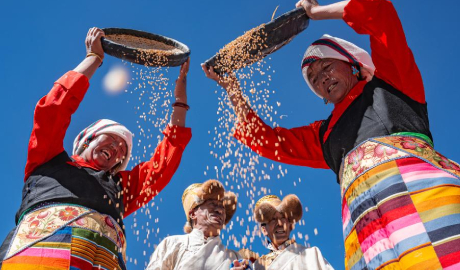

Aerial view of paddy fields in Jungar Banner of Ordos, China's Inner Mongolia
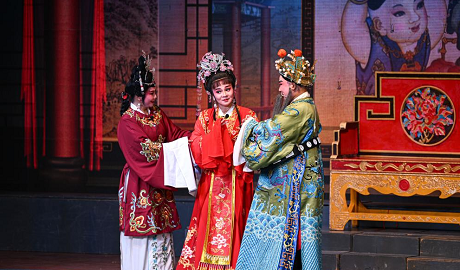
Dazhipo Qiong Opera cultural season begins in China's Hainan
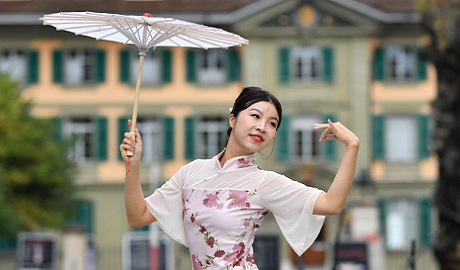
"Hello! China" culture, tourism promotion event held in Bern, Switzerland
点击右上角![]() 微信好友
微信好友
 朋友圈
朋友圈

请使用浏览器分享功能进行分享
